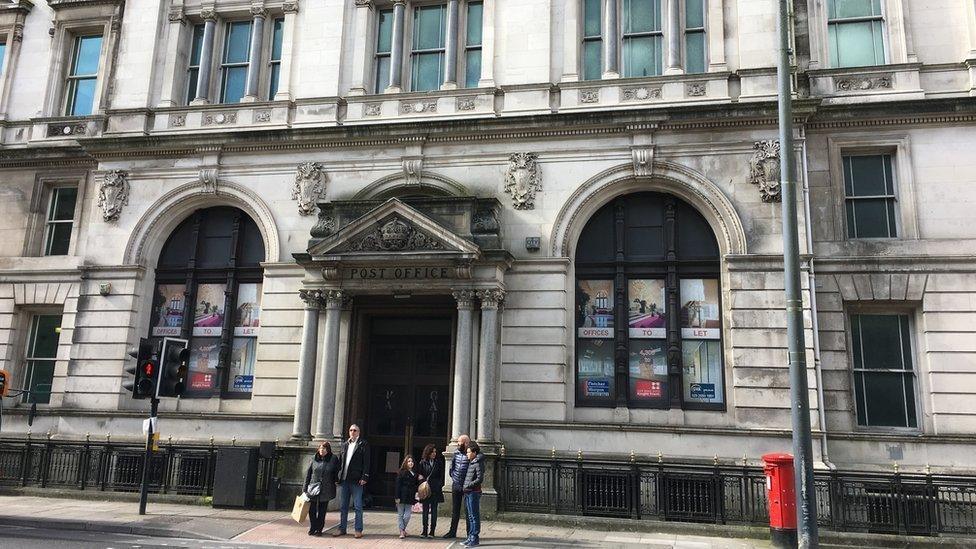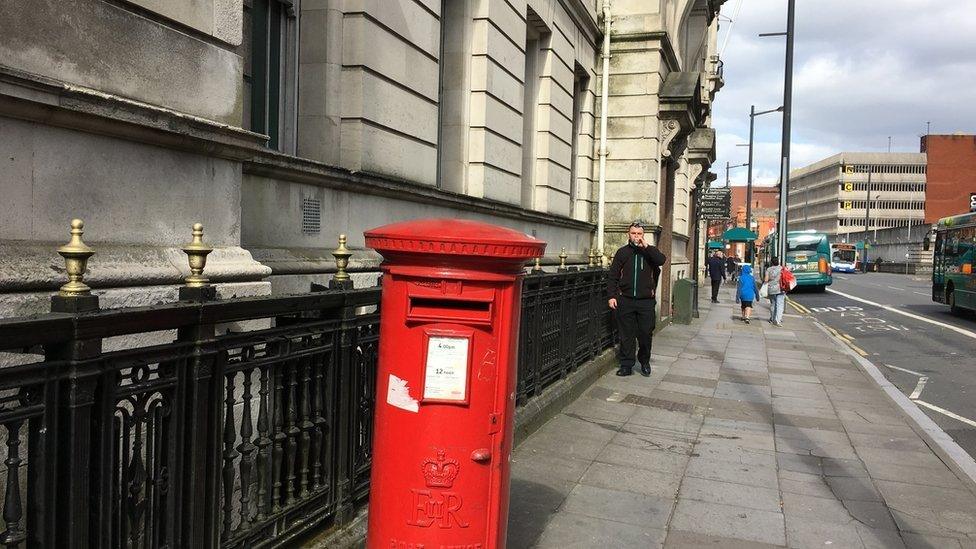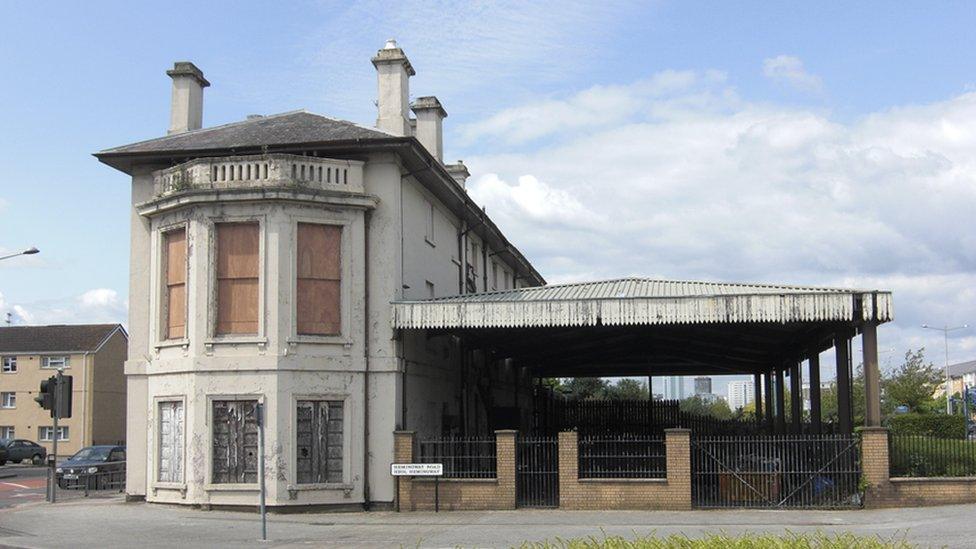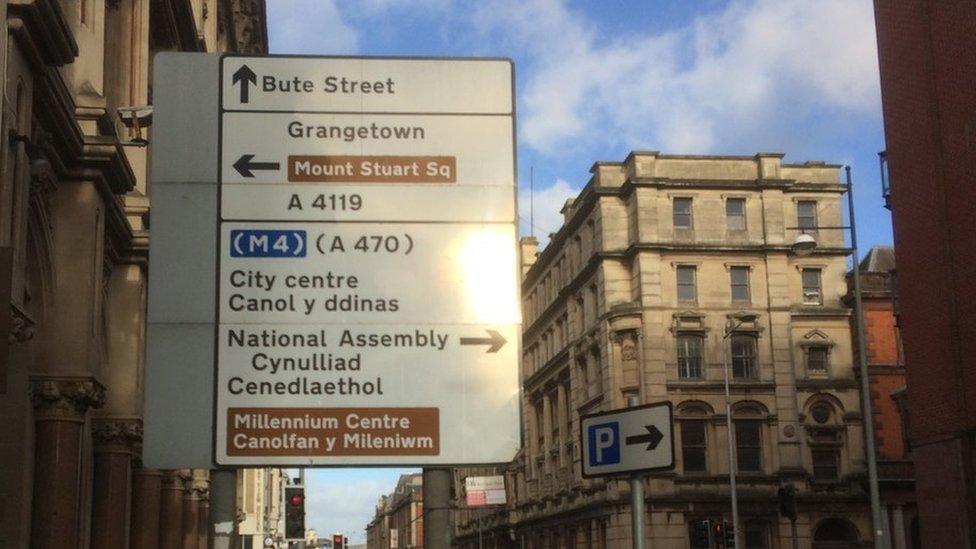Cardiff listed post office could be unused for six years
- Published

A historical building could be empty for six years while Cardiff city centre is redeveloped around it.
The four-storey post office on Westgate Street was considered one of the finest in the UK when built in the 1890s.
But the Grade II-listed building has been empty since tenant BT moved out, even though its lease runs until 2023.
Owner Bamfords Trust failed to sell it for £11.5m in 2013 and will continue collecting rent before re-evaluating when the contract ends.
It is in a prime location, between the Principality Stadium and under-development Central Square, with plans for nearby Cardiff Arms Park and the Brains Brewery site.
"Our client will have income from BT for about five-and-a-half years and, with the area around it being regenerated, they decided to hold on to it," said Matt Phillips of estate agent Knight Frank.
"That will give time for Central Square to develop and they will revisit [the situation]."
BT renovated the 58,000 sq ft (5,000 sq m) premises to grade-A office standard in 1996 before all the staff moved to nearby Stadium House. It is now looking to sub-lease the office.
Mr Phillips believes regeneration work could see the sale value increase and, subject to planning, it could be used as offices, homes or a hotel.

The building illustrates the "staggering" growth of the city in the late 1800s, according to Cardiff University Welsh history professor Bill Jones.
In 1860, its population was 50,000 but this rose to 230,000 by 1920.
Similarly, in 1880, Cardiff's postal service employed 86 people and delivered 2,800 parcels but by 1919, 1,626 people dealt with 60,000 parcels, with two million letters processed every week.
In line with this, ambitious plans for a new headquarters were unveiled in 1893 when the site of a circus was purchased from Lord Bute.
Writing in 1897's Illustrated History of Cardiff, Arthur Mee described it as "one of the finest establishments of the kind in the provinces, and which abundantly shows the confidence that the central authorities show in the future of Cardiff".
Prof Jones said its creation demonstrates Cardiff's rapid growth into a commercial centre because of increased trade through coal and the docks.
"The building oozes confidence, an illustration of how much money was going through Cardiff, creating this idea of it being the metropolis of Wales," he said.
Letters piled up in Cardiff during 1971 postal strike
"That London was persuaded to build it, gives an idea of how important Cardiff was becoming, the confidence they had in the future of it."
Prof Jones said the city was "developing rapidly", further illustrated by plans to turn Westgate Street and the Arms Park into a commercial centre.
But times changed with the demise of the coal industry and, by 1983, the post office left the building for a new site at The Hayes.
In the late 1980s, there were plans to turn it into a five-star hotel with a casino in the basement.
But it has been empty since BT moved out with a note in the doorway requesting homeless people stop sleeping there.
While Prof Jones believes it is essential its character is preserved in any future development, he thinks a hotel could be its best use.
"The nature of the tourism market is changing, old buildings are more appealing [than new-build hotels]," he said.
"People like linking in with the history, gaining a sense of place, where they are. And this is an illustration of how Cardiff developed."
Pointing to the redevelopment of the Coal Exchange into a hotel, he said "someone needs to be bold and take a risk" on it.

- Published14 September 2016

- Published22 January 2017

- Published16 March 2017

- Published16 December 2016

- Published22 November 2016
